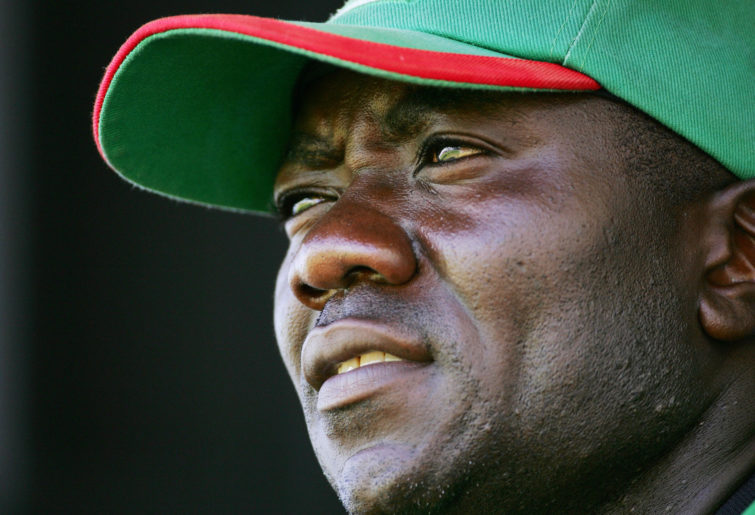T20 World Cup semi-finals LOCKED in: India smash Zimbabwe, Pakistan fight past Bangladesh to leapfrog Proteas
India and Pakistan have claimed the final two semi-final berths and will take on New Zealand and England in the World Cup semis.
Opinion
It is well known that Kenya defended a modest total of 166 in their famous 1996 World Cup victory against the West Indies at Pune’s Nehru Stadium.
The historic match, played on leap year day, saw the unheralded associate side bowl the two-time champions out for a paltry 93, with the wreckers-in-chief being Rajab Ali (3-17, including the prized wicket of Brian Lara) and captain Maurice Odumbe (3-15).
Almost exactly a decade later, the Kenyans bettered this figure by successfully defending an even lower total, in what was the third of a five-match series in Zimbabwe. Coming into this series, they had beaten Zimbabwe only once in 14 completed ODIs – a seven-wicket win at Bloemfontein in the Super Six stage of the 2003 World Cup, a result that confirmed their passage into the semi-finals.
While Kenya’s progress had hit a roadblock since their fairy tale 2003 World Cup campaign, Zimbabwe were in the midst of the crisis that had led to the exodus of many leading players, not to mention a withdrawal from the Test scene. Opening batsman Terry Duffin, who had played two Tests against India in 2005 but was yet to make his ODI debut, was named as Zimbabwe’s new captain ahead of the series.
Playing their first ODI in over 17 months, Kenya lost the first game at Bulawayo’s Queens Sports Club by eight wickets. They levelled the series with a convincing 79-run win at the same venue, with captain Steve Tikolo scoring 98 in a total of 7-284. Thereafter, the action moved to the Harare Sports Club, which played host to the third game on March 1, 2006. With the series locked at 1-1, there was all to play for.

Steve Tikolo (Adrian Dennis/AFP via Getty Images)
The pitch was spiced up due to rain, which caused a delay of more than two hours and reduced the match to a 44-over affair. Tikolo opted to bat first, but after a cautious start from openers Kennedy Otieno and Morris Ouma and a few dropped catches, the wheels began to come off. Both batsmen fell to paceman Edward Rainsford, before the middle order caved in to send the score crashing to 5-56.
Tanmay Mishra and Jimmy Kamande steadied things a bit by adding 32 for the sixth wicket, which would end up as the highest partnership of the game. David Obuya chipped in as well, top-scoring with 22 from number eight before being the last man out at 134 off the fifth ball of the 43rd over. Five Zimbabwean bowlers took at least one wicket each, with Rainsford (3-16) being the pick among them.
Though it seemed an inadequate total, Zimbabwe’s inexperienced batsmen had to battle the tough conditions if they were to get across the line. With just two runs on the board, Thomas Odoyo (3-13) bowled Piet Rinke off the third ball of the chase. The seasoned pace-bowling all-rounder soon added the scalps of Hamilton Masakadza (LBW) and Duffin (caught behind by Otieno) to reduce the score to 3-25.
Wicketkeeper Brendan Taylor and Charles Coventry shared in a fourth-wicket stand of 27, before the latter was caught and bowled by first-change bowler Peter Ongondo. Save for Taylor, who was the top-scorer with 33, none of the batsmen appeared to show the application required in the challenging scenario. Taylor took the score to 4-65, at which point he was caught behind off Tony Suji’s medium pace.
What ensued was a total capitulation, as Suji (2-16) and Ongondo (4-14) made short work of the rest of the line-up. While Suji added the wicket of Elton Chigumbura, Ongondo grabbed four of the last five wickets. Odoyo was not done yet either, as he contributed to the run out of Prosper Utseya. A sensational Kenyan win was sealed when Ongondo bowled Anthony Ireland to condemn Zimbabwe to 69 in 22.5 overs.
Odoyo was rewarded for his opening burst with the man of the match honour. This was then Zimbabwe’s fourth lowest ODI total, and remains the lowest by any team against Kenya. If you exclude matches that saw revised targets or had overs curtailed after the start of play, Kenya’s 134 is currently the joint sixth lowest ODI total to be successfully defended and the second lowest by an associate nation.
Zimbabwe bounced back to win the fourth ODI by 109 runs, before the abandonment of the decider forced a 2-2 result. Ongondo finished as the leading wicket-taker with 11 wickets at just 9.91, while Rinke topped the batting charts with 170 runs at 42.50, closely followed by Otieno’s tally of 169 at 42.25. Kenya’s overall ODI record against Zimbabwe stands at five wins and 25 losses from 32 matches.